How to keep remote stroke consult services thriving
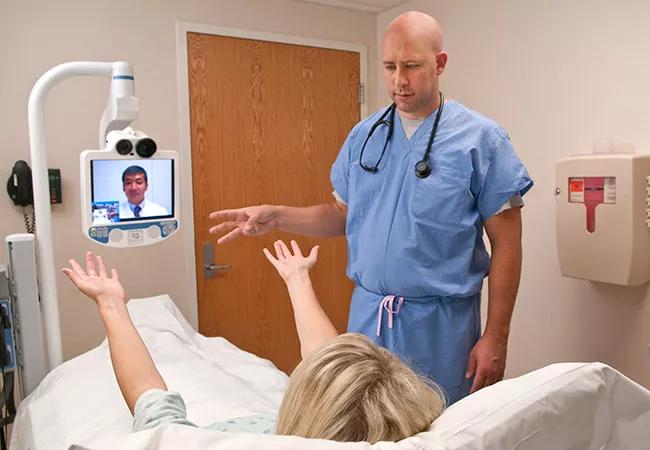
By M. Shazam Hussain, MD, and Dana Collins, MBA
Cleveland Clinic is a non-profit academic medical center. Advertising on our site helps support our mission. We do not endorse non-Cleveland Clinic products or services. Policy
In 2015, stroke neurologists with the Cleveland Clinic Telestroke Network (CCTN) provided remote consultation services to more than 1,000 patients in 15 healthcare facilities in Ohio, Pennsylvania and Florida. We achieved an intravenous tissue plasminogen activator (IV tPA) utilization rate of 16 percent, well above the national average of 3 to 5 percent and nearing the approximately 20 percent achieved by highly specialized centers.
One of the primary reasons for the ongoing success of the CCTN is that it’s a dedicated service line, with stroke neurologists on call 24/7. This level of support for acute stroke patients ensures a rapid response to partner hospitals, which helps improve outcomes. In 2015, the average time from when a CCTN neurologist was paged for a consultation until the physician called back the hospital was one minute.
Nationwide, there are only four neurologists per 100,000 U.S. residents (Neurology. 2013;81:479-486), which makes the need for telestroke services critical. However, implementing and sustaining a telestroke program can be demanding. At Cleveland Clinic, we have tripled our partner hospitals since 2014 and learned some lessons along the way that could benefit other healthcare systems offering telestroke services.

Launched in 2011, the CCTN is a homegrown program employing a “hub and spoke” model: Our Joint Commission-certified Comprehensive Stroke Center on Cleveland Clinic’s main campus serves as the hub, partnering with “spoke” facilities (within and outside the Cleveland Clinic health system) that lack round-the-clock stroke specialist support. The network is enabled with a mobile, two-way videoconferencing system and a dedicated link between our partner hospitals’ imaging systems and our main campus to facilitate patient assessment and treatment decision support
When patients identified with stroke arrive at the emergency department (ED) of a partner facility, emergency physicians perform a rapid assessment, order a CT scan and then call the CCTN. Within minutes, a CCTN stroke neurologist is working remotely with the ED staff. Together they check vital signs, perform an examination, review results of the CT scan and make treatment decisions.
Since its inception, the CCTN has grown to serve 15 hospitals or freestanding EDs that do not have stroke specialists. This includes eight within the Cleveland Clinic health system as well as seven external facilities — one in Ohio, five in Pennsylvania and one in Florida. The figure below illustrates how two participating hospitals saw their IV tPA delivery rates improve following implementation of telestroke services.
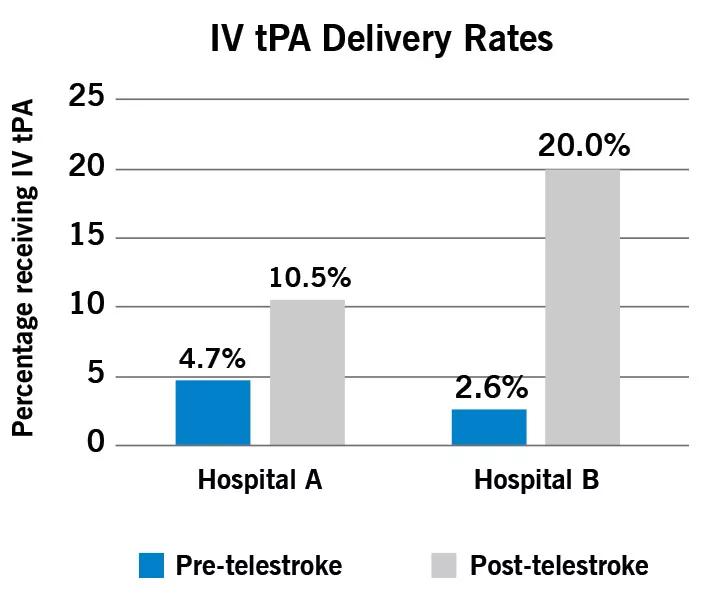
Figure. Delivery rates of IV tPA to patients with acute ischemic stroke at two participating CCTN hospitals during 12-month periods before and after initiation of telestroke services in 2014.
Participating in a telestroke program offers several benefits to these 15 facilities, including access to a multidisciplinary team of stroke experts who can help determine the appropriateness of IV tPA administration, intra-arterial thrombolysis, mechanical revascularization and other treatment options.
But the greatest benefit may be that patients often are able to remain in their local hospitals, closer to family and local physicians. We work closely with our partner hospitals, making sure that neurologists and other healthcare staff understand our decision-making and can seamlessly pick up care of the patient the next day and beyond. Only the most severe stroke patients are transferred to Cleveland Clinic’s main campus, which has two neurological ICUs and full neurointerventional and neurosurgical capabilities.
Success of a telestroke program often hinges on three key areas: technology, resources and training. During the five years the CCTN has been in operation, we have gained the following insights in these areas:
As a natural extension of the CCTN, Cleveland Clinic launched one of the nation’s first mobile stroke treatment units (MSTUs) in 2014. We also plan to further expand the number of participating CCTN facilities, continually research best-in-class telestroke technology and investigate the use of telemedicine for situations beyond acute stroke, with the ultimate goal of reaching patients faster and improving outcomes.
Dr. Hussain is Head of the Cleveland Clinic Stroke Program and Interim Director of Cleveland Clinic’s Cerebrovascular Center.
Ms. Collins is the Telestroke Program Manager and Department Manager in the Cerebrovascular Center.
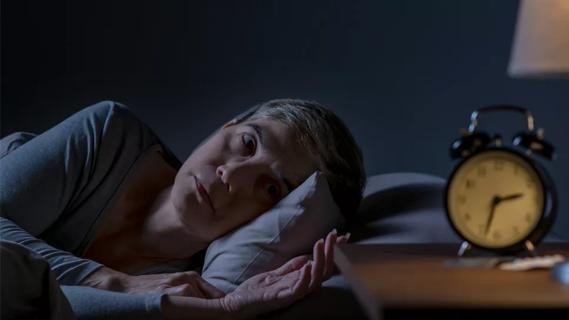
Large cohort study suggests need for routine sleep screening as part of neurological care
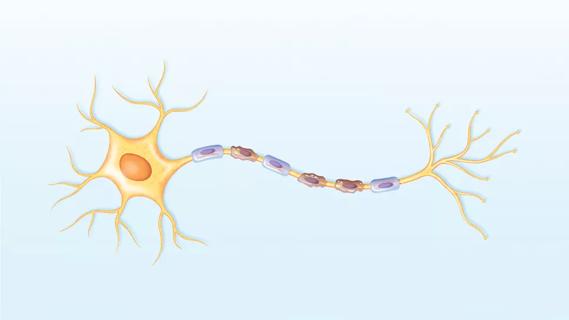
Early experience with the agents confirms findings from clinical trials

Determining the right dose and injecting in the right muscle can be challenging
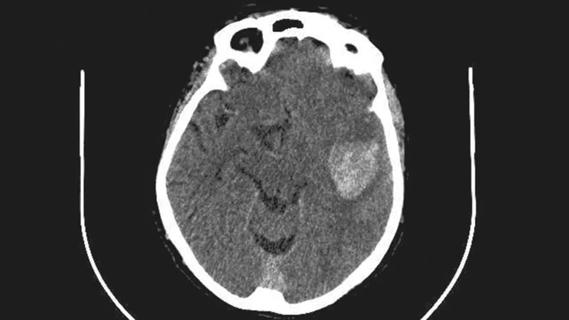
ENRICH trial marks a likely new era in ICH management
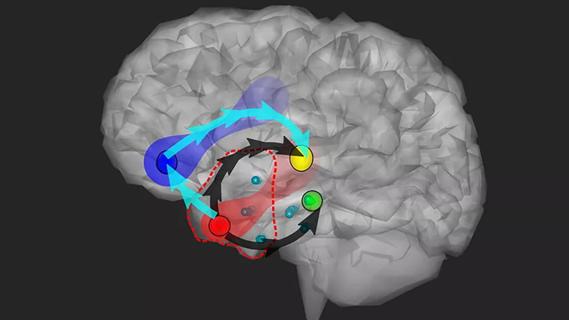
Study combines intracranial electrophysiology and SPECT to elucidate the role of hypoperfusion

New research sheds light on a potentially devastating condition that is reversible when properly managed

Testing options and therapies are expanding for this poorly understood sleep disorder

Real-world claims data and tissue culture studies set the stage for randomized clinical testing